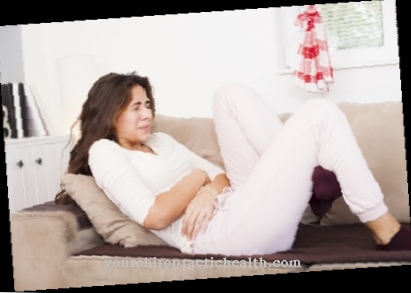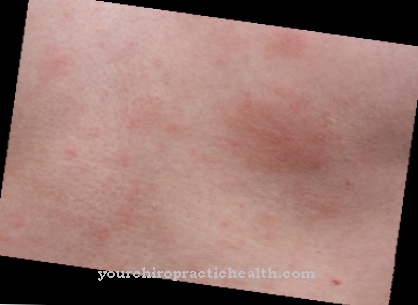Calf pain are an unpleasant symptom that can be caused by various diseases. They often occur while running, climbing stairs, or making unnatural movements. Those affected are severely limited by the complaints in daily life, but can counteract the problems with targeted treatment.
What is calf pain?

Calf pain is usually a pulling or stabbing pain in the calf muscles. The complaints can arise from circulatory disorders, which in turn can have anatomical causes.
Pain in the calves is more common after accidents. Usually not only the calf is affected, but the whole foot. The pain often only spreads over the entire leg over months or years.
causes
The causes of calf pain are many. They occur as a result of sports injuries such as bruises, calf cramps and bruises, but can also result from poor posture or excessive strain. Circulatory disorders are also a cause of calf pain. This is the case if the pain mainly occurs when walking and subsides again when sitting. Since this type of calf pain indicates an increased risk of heart attack, action should be taken quickly.
In addition, problems with the calves can also arise from a herniated disc and the associated irritation of nerve roots. Degenerative changes in the spine are also a risk factor.
Lastly, calf pain is often associated with thrombophlebitis. This is an inflammation of the superficial skin veins, which causes pain. Varicose veins, arthritis, and similar vascular diseases are also common triggers for chronic calf problems.
You can find your medication here
➔ Medicines for muscle crampsDiseases with this symptom
- Circulatory disorders
- Compartment syndrome
- Sports injuries
- Phlebitis
- Calf cramps
- disc prolapse
Diagnosis & course
The diagnosis of calf pain depends heavily on the cause. Temporary problems such as pain in the calves after running can be identified by the fact that the pain is severe and cramp-like, but disappears again after the end of the exercise.
However, with constant overload it can happen that this pain, which is also known as lodge syndrome, takes a chronic course. They then also exist in the idle state. The diagnosis is based on a detailed discussion with the doctor and an examination of the calf muscles. However, this is only a suspected diagnosis. Further tests will be carried out later to rule out other diseases as the cause.
If a lodge syndrome is suspected, a specialist sports doctor must be consulted, who will carry out further examinations and initiate appropriate therapy. To accomplish this, pressure measurements and stress tests are carried out, for example, but an x-ray of the muscles is usually also taken to make the final diagnosis.
The course of calf pain also depends on the underlying cause. Usually, the symptoms worsen over months or years if no action is taken. In the beginning it is only a slight sting and later on there is severe pain that can spread throughout the leg. This has a severe impact on the quality of life. Mobility is also reduced due to pain in the calves, as any movement while running or driving is extremely uncomfortable.
When should you go to the doctor?
In most cases, calf pain is caused by an unusually heavy load, so that long-lasting pain occurs even when the patient is resting. However, immediate treatment by a doctor is not necessary, as there is a high probability that it is simply a harmless sore muscles.
Sore muscles do not require treatment by a doctor, as there should be a significant improvement after two to three days. If pain persists after this period, then a doctor should definitely be seen. Muscles or tendons that cannot heal on their own may be damaged. If medical and drug treatment is not taken at this point, further complications threaten. If the affected areas are subjected to further stress, individual tendons and muscles can tear, so that an operation is necessary.
Thus, the following applies: in most cases, calf pain is triggered by unusual stress. However, if the pain persists after two to three days, a medical examination should take place. An appropriate doctor can make an exact diagnosis so that serious injuries can be detected early and treated properly. If such treatment is not used, there is a risk of long-term damage or complex damage to individual tendons, muscles and ligaments.
Doctors & therapists in your area
Treatment & Therapy
Calf pain can be treated effectively after a comprehensive diagnosis. Acute muscle injuries, strains or bruises are treated by protecting the affected muscles. The so-called PECH method is used here (P for pause, E for ice, C for compression and H for elevated storage). Mild pain relievers as well as cooling pain ointments and gels can also be prescribed.
The latter have anti-inflammatory and decongestant effects. If the cause of the calf pain is muscle cramps or hardening, minerals such as magnesium and iron are used. Massages are also used to loosen hardening and promote blood flow to the affected muscles.
Calf pain that results from a chronic misuse or overload can be remedied by taking a rest. It is advisable to carefully analyze the underlying bad posture in order to avoid the problems in the future. Problems with the calves caused by a torn muscle need to be treated surgically. In addition, compression stockings are usually prescribed to relieve the muscles after the surgical procedure.
Outlook & forecast
Calf pain can have a harmless cause. The outlook and prognosis depend on the underlying cause of the calf pain. If it concerns tension, magnesium deficiency, sore muscles, calf cramps or the consequences of excessive exercise, these can be remedied with conventional means. Resting, giving magnesium, massages or careful stretching of the shortened muscles are indicated. If the person concerned did sport, it stands to reason that these causes are possible. The situation is similar when someone removes electrolytes from their body using laxatives or dehydrating agents.
The prognosis looks worse when it comes to calf pain caused by other factors. Symptoms may suggest a deep vein thrombosis in the leg, a torn muscle fiber, or problems with the feet. If calf pain persists, therefore, seek medical advice - especially if accompanying symptoms such as swelling, reddening or bluish discoloration, fever and the like are observed.
If the calf pain is due to foot problems, an orthopedic surgeon may be the right contact. Deposits may be required. If the calf pain arose as a result of a thrombosis, the prognosis is different. With immediate consultation of a doctor, the thrombus can be dissolved with medication. In other cases, its wandering can lead to a life-threatening embolism. Therefore, calf pain - especially after long flights or sitting for hours - should be scrutinized.
You can find your medication here
➔ Medicines for muscle crampsprevention
Pain in the calves can be prevented by using the muscles gently. Athletes in particular can avoid a lot of problems with a comprehensive warm-up program and regular stretching exercises. In addition, the first signs of an impending muscle injury must be recognized early, which requires some experience.
In addition, abstaining from alcohol and cigarettes relieves the strain on the veins and muscles in the calves. In general, a healthy lifestyle with enough exercise can prevent calf pain in many cases. Regular checkups will also prevent existing calf problems from worsening.
You can do that yourself
A doctor does not always have to be consulted with calf pain. You can usually alleviate the symptoms yourself with the help of a few home remedies and measures. First of all, it is advisable to raise your legs as often as possible and treat them with natural products. In addition, the calves should be spared for the time being so that the pain does not increase any further.
In addition, applications with cold-pressed rosemary or lavender oil and light massages are recommended for calf cramps. Fresh fruit and vegetables, as well as alkaline tablets from the pharmacy, help with possible over-acidification. Calf pain as a result of a venous disease can be treated with the help of horse chestnut tea and the vein strengthening sweet clover. Cool compresses and compresses with healing clay relieve acute pain and also help with chronic calf problems. Warm applications and natural remedies such as horse ointment help with bilateral calf pain. In addition, the calves should alternately be showered cold and hot in the morning and evening.
If your calves hurt as you grow, relaxation, bed rest, and a healthy lifestyle will help. If the calf pain recurs despite these measures, a doctor should be consulted. Early diagnosis enables targeted treatment and prevents further complications.
























.jpg)



